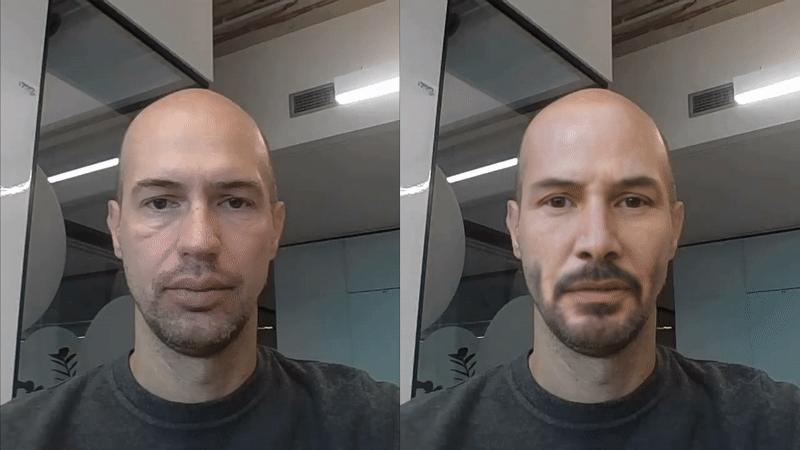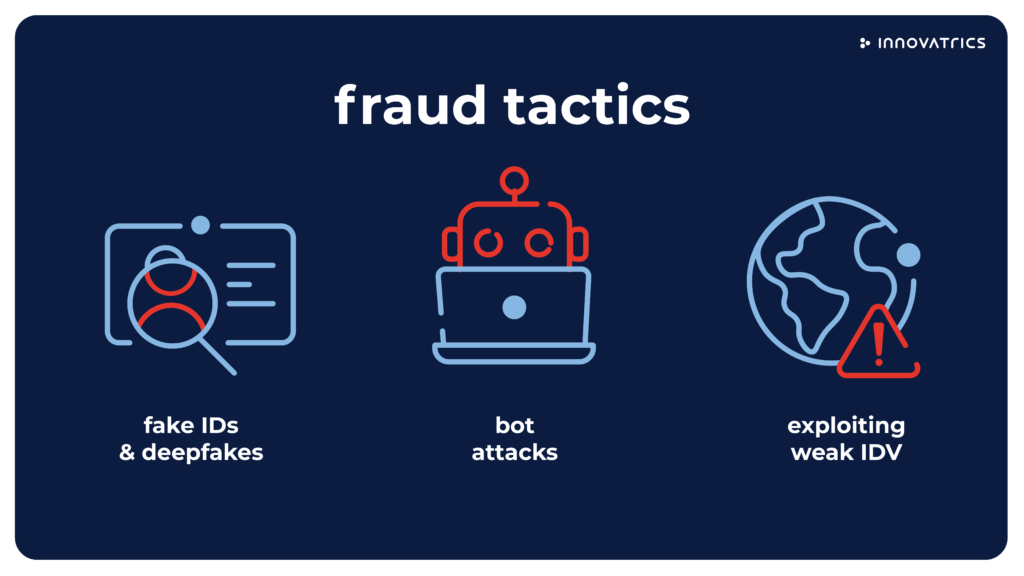Deepfake Detection definition
A deepfake is a form of synthetic media created using artificial intelligence (AI) techniques that convincingly imitates real people. It involves combining existing visual or audio material to produce manipulated or fabricated content that looks or sounds authentic. The name “deepfake” is a portmanteau of “deep learning” and “fake.” Deep learning algorithms analyze and learn patterns from extensive datasets of images or videos, which are then used to generate or alter content realistically.
Historical Development of Deepfake Detection Technologies
The history of deepfake detection began as a reactive response to the emergence of synthetic media technology. While the concept of creating realistic human images through Computer-Generated Imagery (CGI) can be traced back to the 1990s, the modern deepfake era began in 2017 when a Reddit user named “deepfake” created a subreddit and began posting face-swapped videos using readily available deep learning tools.
As these techniques rapidly evolved from simple face-swapping to sophisticated deepfake videos in 2018 with Generative Adversarial Network (GANs) playing an important role, the research community quickly recognized the urgent need for detection methods.
Early detection efforts emerged in 2018 with researchers like Güera & Delp presenting methods to detect deepfake videos using recurrent neural networks (RNNs). The field gained significant momentum with the creation of benchmark datasets like FaceForensics++ for learning to detect manipulated facial images, followed by major industry initiatives including the DeepFake Detection Challenge (DFDC) Dataset. The evolution has been characterized by an ongoing technological arms race, with detection methods rapidly advancing from simple pixel-level analysis to sophisticated deep learning approaches using Convolutional Neural Networks (CNNs), temporal analysis, and multi-modal detection systems.
By 2025, the field has expanded to address not just visual deepfakes but also voice deepfakes, with reports showing a 1300% increase in deepfake fraud, leading to the development of comprehensive detection frameworks that combine computer vision, audio analysis, and behavioral biometrics to combat increasingly sophisticated synthetic media threats.
The rapid advancement of synthetic media technology presents an ongoing challenge to digital authenticity. This necessitates continuous innovation in detection methods to counter malicious applications effectively.
How Deepfakes Are Created
Deepfakes are produced through several sophisticated AI techniques that manipulate or generate visual and audio content to create highly realistic fabrications. These techniques primarily involve the use of deep learning, a subset of machine learning, which allows algorithms to learn from vast amounts of data. The core methods include:
- Generative Adversarial Networks (GANs): The most common method involves two neural networks competing against each other: a generator that creates fake content (e.g., an image or video frame), and a discriminator that attempts to distinguish between real and fake content to detect forgeries. Through a continuous adversarial process, both networks improve, with the generator becoming increasingly adept at producing convincing fakes and the discriminator becoming better at detecting them. This iterative competition drives the creation of highly realistic deepfakes.
- Autoencoders: These neural networks are trained to encode data (e.g., a person’s face) into a lower-dimensional representation and then decode it back into its original form. In the context of deepfakes, two autoencoders can be trained on different individuals’ faces. By swapping the encoded representation from one person and decoding it using the other’s decoder, a deepfake can be created where one person’s face appears on another’s body.
- Face Swapping and Reenactment: These are specific applications of the underlying AI techniques. Face swapping involves replacing one person’s face with another’s in a video or image. Face reenactment, on the other hand, manipulates the facial expressions and head movements of a person in existing footage to match those of a different source.
- Neural Style Transfer: While not exclusively a deepfake technique, neural style transfer can be used to apply the stylistic elements of one image or video to another. This can be used to create deepfakes with specific artistic styles or to manipulate the appearance of individuals in existing footage.
The increasing sophistication of deepfake technology, driven by advancements in computational power and the availability of extensive datasets, makes these synthetic creations progressively harder to detect. This poses substantial challenges across various domains, including remote identity verification.


Types of Deepfake Detection
Deepfake detection technologies employ various methods to identify synthetically generated or manipulated media. Here are four common approaches:
Image-Based Detection
These systems analyze still images for signs of artificial generation, examining pixel-level inconsistencies, lighting irregularities, and anatomical impossibilities that may indicate synthetic content.
Video-Based Detection
Video detection algorithms analyze temporal inconsistencies across frames, looking for unnatural movements, blinking patterns, and facial expression transitions that reveal artificial manipulation.
Audio Detection
Audio deepfake detection focuses on identifying synthetic speech by analyzing spectral features, voice artifacts, and unnatural prosodic patterns in speech recordings.
Hybrid Multimedia Detection
Advanced systems that simultaneously analyze visual and audio components to identify discrepancies between lip movements and speech, providing more robust detection capabilities.


How Deepfakes Can Be Identified
Deepfake detection is a sophisticated and multi-faceted process that leverages a combination of technical indicators, behavioral analysis, and metadata scrutiny to uncover signs of manipulation. This comprehensive approach is essential given the increasing sophistication of deepfake generation techniques.
Technical Indicators
This category involves analyzing the digital artifacts and anomalies present in the manipulated media. Key technical indicators include:
- Temporal Inconsistencies: Unnatural changes between video frames, including inconsistent lighting or shadows
- Anatomical Irregularities: Impossible facial proportions, asymmetrical features, or unnatural eye movements
- Compression Artifacts: Unusual patterns created during the generation process that differ from normal video compression
- Blending Boundaries: Subtle edges where generated content meets original material
Behavioral Analysis
This aspect focuses on evaluating the actions and expressions of individuals within the media for signs of unnatural or uncharacteristic behavior. This includes:
- Blinking Patterns: Early deepfakes often showed abnormal or absent blinking; modern detection looks for more subtle eye movement irregularities
- Micro-expressions: Brief, involuntary facial expressions that are difficult to replicate accurately in synthetic content
- Speech-Visual Synchronization: Misalignment between lip movements and audio content
Metadata Analysis
Metadata, the information about the data, can provide crucial clues about the origin and authenticity of digital media. This involves:
- Digital Forensics: Examining file properties, creation timestamps, and editing history for signs of manipulation
- Provenance Tracking: Verifying the source and chain of custody for digital content
Examples of Deepfake Technology Applications
Deepfake technology has evolved into a powerful and versatile application with a wide range of uses across various industries. While its negative implications such as the creation of misinformation, identity fraud, and non-consensual content are well-documented, it’s also being leveraged for positive and innovative purposes. Here is a look at some of the key applications of deepfake technology:
Entertainment and Media Production
The film and television industry is a leading adopter of deepfake technology, leveraging it to advance visual effects and storytelling.
- De-aging Actors: Deepfakes allow filmmakers to digitally “de-age” actors for flashback scenes or to portray a character over a long period. This was notably used in films like Martin Scorsese’s “The Irishman”, where the main actors were made to look decades younger to match the narrative.
- Voice Cloning and Dubbing: Deepfake voice cloning can be used to create realistic voiceovers, making it possible for a single actor to “speak” multiple languages while preserving their original vocal characteristics and lip movements. This streamlines the localization process for films and video games.


Marketing and Advertising
Brands are exploring deepfakes to create engaging, personalized, and cost-effective campaigns.
- Creating Synthetic Influencers: Companies can create photorealistic avatars or “synthetic influencers” to represent their brand. These digital spokespeople are fully controllable, always available, and can be used indefinitely for various campaigns.
- Personalized and Localized Content: Deepfakes enable the creation of thousands of personalized advertisements. A brand can use a single video and deepfake technology to alter the presenter’s face, voice, and language to match specific demographics or regional markets, making the content more relatable and impactful.
- Reviving Brand Mascots and Founders: Deepfakes can bring back historical figures or long-retired brand mascots to tell a company’s story or promote a new product. This offers a unique and nostalgic way to connect with audiences.
Education and Training
Deepfakes are transforming educational and professional development by creating immersive and interactive learning experiences.
- Virtual Tutors and Historical Figures: The technology can be used to create virtual tutors that mimic the appearance and voice of renowned educators. It can also bring historical figures to life, allowing students to “interact” with a realistic portrayal of figures like Abraham Lincoln or Marie Curie.
- Realistic Simulations: Deepfakes can create realistic patient scenarios for medical students to practice diagnosing and treating conditions in a safe and controlled environment. This provides valuable hands-on experience without the ethical concerns of working with real patients.
- Language Learning: Deepfakes can be used to create immersive language-learning environments where students can practice with realistic simulations of native speakers, complete with accurate lip movements and facial expressions.
Art and Creative Expression
Artists are using deepfakes as a new medium to explore themes of identity, reality, and technology.
- Conceptual Art: Artists use deepfakes to create works that challenge our perception of truth and media. For instance, some installations use deepfakes of public figures to comment on data privacy and the nature of digital trust.
- Digital Resurrection: Creative projects have used deepfakes to pay tribute to or “resurrect” deceased artists and musicians, allowing them to perform again in a new context. This can be a powerful way to honor their legacy and engage new audiences.
While the potential for misuse remains a significant concern, these examples highlight the transformative potential of deepfake technology. By focusing on ethical use, transparency, and regulation, society can harness its power for creative, educational, and beneficial applications.
Future Implications of Deepfake Detection Technology
Deepfake technology is rapidly evolving, leading to significant implications for the future of information, society, and legal frameworks. The increasing accessibility of creating realistic synthetic media presents a range of complex challenges and transformations that we must address.
Erosion of Security and Trust
The most immediate threat posed by deepfake technology is its potential to completely undermine digital trust. The ability to create convincing videos, audio clips, and images of people saying or doing things they never did could lead to a pervasive state of “epistemic crisis“, a situation where it becomes nearly impossible to distinguish truth from fiction. This technology also enables the creation of synthetic identities, entirely fabricated digital personas which can be used for sophisticated identity fraud and financial crimes.
This could have catastrophic consequences in areas such as:
- Political Discourse: Spreading disinformation to manipulate elections or incite social unrest.
- Corporate Espionage: Creating deepfake videos of executives to influence stock prices or damage a company’s reputation.
- Identity Fraud in Remote IDV: Exploiting remote identity verification (IDV) systems by using deepfakes to impersonate individuals during the onboarding process.
- Judicial System: The introduction of deepfake “evidence” in court, making it difficult to rely on video or audio testimony.
This decline in trust could lead society to the brink of an “infocalypse.” The overwhelming amount of unverifiable content may soon make it impossible to distinguish reality, fundamentally changing how we consume news and interact with digital media.


Legal and Regulatory Challenges
Deepfakes present unprecedented challenges that current legal systems are ill-equipped to handle. Governments globally are in the early stages of developing legislation to address this issue, navigating a delicate balancing act. Future laws must:
- Criminalize Malicious Use: Create specific statutes to prosecute individuals who use deepfakes for fraud, blackmail, or harassment.
- Protect Legitimate Use: Ensure that regulations do not stifle the positive applications of the technology in areas like entertainment, education, and art.
- Update Evidence Laws: Revise legal standards for the admissibility of digital evidence in court, possibly requiring new methods for proving the authenticity of a video or audio file.
Navigating the legal landscape of deepfakes is further complicated by the internet’s global reach. Content can originate in one nation and be distributed across borders, creating challenges for determining jurisdictional authority and enforcing laws.
Technological Arms Race
The battle between those who create deepfakes and those who detect them is a continuous cycle of innovation. As detection algorithms improve, for example, by looking for subtle inconsistencies in eye blinking or facial expressions, deepfake creators respond by improving their generation techniques to mimic these human traits more accurately. This “arms race” means:
- Constant Innovation: Cybersecurity firms and researchers must continually develop new methods to stay ahead of deepfake generation tools.
- Escalating Costs: The resources required for both creating and detecting deepfakes will likely increase, with sophisticated tools becoming available to a wider range of actors.
- Ephemeral Solutions: A detection method that works today may be obsolete tomorrow, creating a sense of perpetual instability in the field of digital forensics.
Deepfakes in Identity Verification
The threat of deepfakes is likely making traditional forms of identity verification, such as video calls or photo-based IDs, unreliable. This drives a shift toward more robust, multi-layered authentication systems. These future methods may include:
- Blockchain-based Content Provenance: Using an immutable, distributed ledger to create a transparent, unchangeable record of a digital file from its moment of creation.
- Biometric Liveness Detection: Systems that can verify a person’s physical presence during a digital interaction by analyzing subtle biological signs like pupil dilation, skin texture, or micro-movements, making it nearly impossible to use a deepfake in place of a real person.
- Video Injection Detection: Techniques that identify whether a video feed is coming from a live physical camera or is being “injected” from a fake source, like a virtual camera, a pre-recorded video file, or an emulator. This focuses on the source of the data, not just the content itself.
- Cryptographic Signatures and Watermarking: Embedding unique, verifiable digital signatures into content at the source. This would allow news organizations and content creators to prove the authenticity of their media.
Societal and Psychological Impact
Deepfakes’ growing prevalence will profoundly affect individuals and society. A major concern is the “liar’s dividend,” where malicious actors can dismiss genuine incriminating audio or video as “deepfakes,” leveraging public distrust to evade responsibility. This phenomenon could lead to:
- Increased Skepticism: A general distrust of all digital content, even legitimate journalism and evidence.
- Manipulation of Narratives: Bad actors could use this skepticism to their advantage, muddying the waters and making it harder for the public to agree on a shared reality.
- Changes in Human Behavior: People may become more hesitant to engage in video communication or create digital content for fear of being deepfaked.
Deepfake detection represents a critical frontier in the fight against digital deception and misinformation. As synthetic media technology continues to evolve, detection systems must advance in parallel to maintain digital trust and security. Success in this domain requires collaboration between technologists, policymakers, educators, and citizens to create comprehensive solutions that protect against malicious uses while preserving beneficial applications of synthetic media technology.